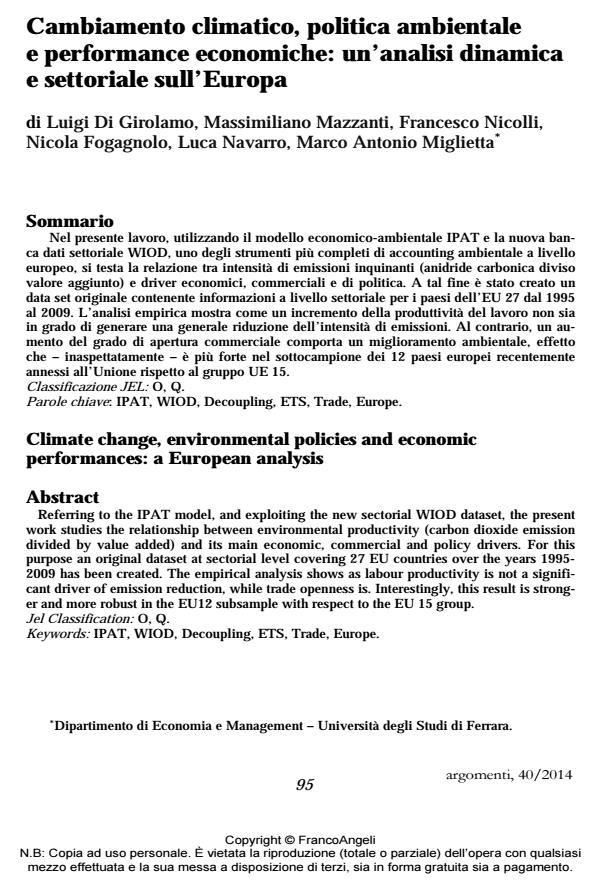Cambiamento climatico, politica ambientale e performance economiche: un’analisi dinamica e settoriale sull’Europa
Titolo Rivista ARGOMENTI
Autori/Curatori Luigia Di Girolamo, Massimiliano Mazzanti, Francesco Nicolli, Nicola Fogagnolo, Luca Navarro, Marco Antonio Miglietta
Anno di pubblicazione 2014 Fascicolo 2014/40
Lingua Italiano Numero pagine 23 P. 95-117 Dimensione file 169 KB
DOI 10.3280/ARG2014-040005
Il DOI è il codice a barre della proprietà intellettuale: per saperne di più
clicca qui
Qui sotto puoi vedere in anteprima la prima pagina di questo articolo.
Se questo articolo ti interessa, lo puoi acquistare (e scaricare in formato pdf) seguendo le facili indicazioni per acquistare il download credit. Acquista Download Credits per scaricare questo Articolo in formato PDF

FrancoAngeli è membro della Publishers International Linking Association, Inc (PILA)associazione indipendente e non profit per facilitare (attraverso i servizi tecnologici implementati da CrossRef.org) l’accesso degli studiosi ai contenuti digitali nelle pubblicazioni professionali e scientifiche
Nel presente lavoro, utilizzando il modello economico-ambientale IPAT e la nuova banca dati settoriale WIOD, uno degli strumenti più completi di accounting ambientale a livello europeo, si testa la relazione tra intensità di emissioni inquinanti (anidride carbonica diviso valore aggiunto) e driver economici, commerciali e di politica. A tal fine è stato creato un data set originale contenente informazioni a livello settoriale per i paesi dell’EU 27 dal 1995 al 2009. L’analisi empirica mostra come un incremento della produttività del lavoro non sia in grado di generare una generale riduzione dell’intensità di emissioni. Al contrario, un aumento del grado di apertura commerciale comporta un miglioramento ambientale, effetto che - inaspettatamente - è più forte nel sottocampione dei 12 paesi europei recentemente annessi all’Unione rispetto al gruppo UE 15.
Parole chiave:IPAT, WIOD, Decoupling, ETS, Trade, Europe.
Jel codes:O, Q.
Luigia Di Girolamo, Massimiliano Mazzanti, Francesco Nicolli, Nicola Fogagnolo, Luca Navarro, Marco Antonio Miglietta, Cambiamento climatico, politica ambientale e performance economiche: un’analisi dinamica e settoriale sull’Europa in "ARGOMENTI" 40/2014, pp 95-117, DOI: 10.3280/ARG2014-040005